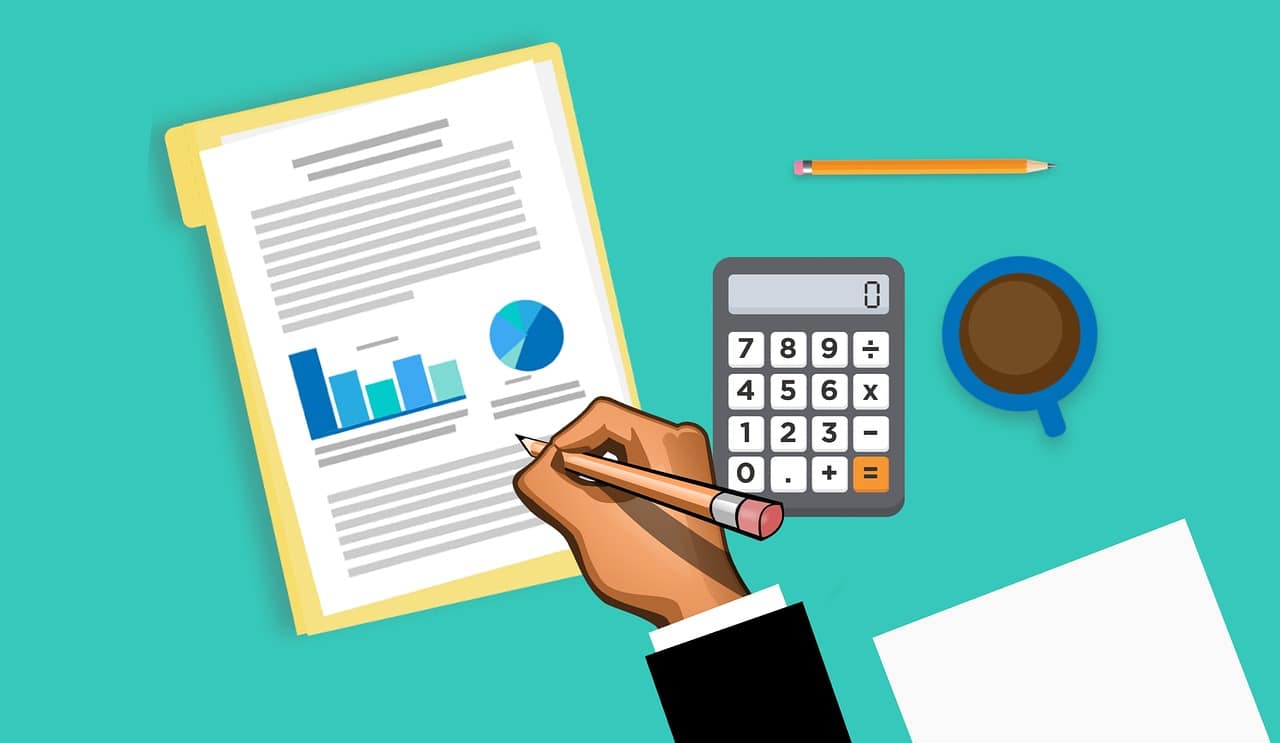
Within the investment strategies in bonds, it should be noted that the way you invest in bonds in the short or long term depends on your investment objectives and terms, the amount of risk you are willing to take and your tax situation.
When considering a bond investment strategy, remember the importance of diversification. As a general rule of thumb, it is never a good idea to put all of your assets and all of your risk in one asset class or investment. You will want to diversify the risks within your bond investments by creating a portfolio of several bonds, each with different characteristics.
Choosing bonds from different issuers protects you from the possibility that a single issuer may not be able to meet its principal and interest payment obligations. Choosing bonds of different types (government, agency, corporate, municipal, mortgage-backed securities, etc.) creates protection against the possibility of losses in any sector of the market. Choosing bonds of different maturities helps you manage interest rate risk.
Investment in fixed income: objectives
With this in mind, consider these various goals and strategies to achieve them. The first one is to preserve capital and earn interest. If your goal is to keep your money intact and earn interest, consider a "buy and hold" strategy. When you invest in a bond and hold it to maturity, you will receive interest payments, usually twice a year, and you will receive the face value of the bond at maturity. If the bond you choose is selling at a premium because its coupon is higher than prevailing interest rates, keep in mind that the amount you receive at maturity will be less than the amount you pay for the bond.
When you buy and hold, you don't have to worry too much about the impact of interest rates on the price or market value of a bond. If interest rates go up and the market value of your bond falls, you won't feel any effect unless you change your strategy and try to sell the bond. However, holding the bond means that you will not be able to invest that capital at the higher market rates.
If the bond you choose is redeemable, you have risked having your principal returned to you before it expires. Bonds are generally "redeemed," or redeemed early, by their issuer, when interest rates are falling, meaning that you will be forced to invest your returned principal at the lowest prevailing rates.
Interest rate applied
When investing to buy and hold, be sure to consider: the bond's coupon interest rate (multiply by the bond's par or face value to determine the dollar amount of your annual interest payments). The "yield to maturity" or "yield to the call." Higher performance can mean higher risks.
The credit quality of the issuer. A bond with a lower credit rating may offer a higher yield, but it also carries a higher risk that the issuer will not be able to deliver on its promises.
Maximize revenue

If your goal is to maximize your interest income, you will typically get higher coupons on long-term bonds. With more time to maturity, long-term bonds are more vulnerable to changes in interest rates. However, if you are a buy and hold investor, these changes will not affect you unless you change your strategy and decide to sell your bonds.
You will also find higher coupon rates on corporate bonds than on US Treasuries with comparable maturities. In the corporate market, bonds with lower credit ratings tend to pay higher returns than higher loans with comparable maturities.
High yield bonds (sometimes called junk bonds) often offer above-market coupon rates and yields because their issuers have credit ratings below the credit rating: BB or lower from Standard & Poor's; Ba or lower from Moody's. The lower the credit rating, the greater the risk that the issuer may default on its obligations or be unable to pay interest or return principal when due.
If you are considering investing in high-yield bonds, you will also want to diversify your bond investments among several different issuers to minimize the potential impact of a single issuer's default. High yield bond prices are also more vulnerable than other bond prices to economic shocks, when the risk of default is perceived to be higher.
Risk management
Interest rate risk management: Stairs and Bars. Buy-and-hold investors can manage interest rate risk by creating a "tiered" portfolio of bonds with different maturities, such as one, three, five, and ten years. A tiered portfolio has the principal being returned at defined intervals. When a bond expires, you have the opportunity to reinvest the earnings at the longer-term end of the ladder if you want to keep it going. If rates are rising, that maturing capital can be invested at higher rates. If they are going down, your portfolio continues to earn higher interest on long-term holdings.
With a bar strategy, you invest only in short-term and long-term bonds, not brokers. Long-term holdings should offer attractive coupon rates. Having some capital that matures in the short term creates the opportunity to invest the money on
The yield on US Treasuries rose on Friday, after the April employment report was not as bad as expected. Additionally, fed funds futures are already discounting the likelihood of negative interest rates this year, and investors remain concerned about when the economy may rebound from the coronavirus-induced recession. The 10-year benchmark bond yield rises to 0,6688% while the two-year debt yield reaches 0,1329%. This is the scenario that the fixed income markets present as an alternative to the stock market in a very complicated year such as the current one.
Bonds of peripheral countries
There are not a few analysts in the financial markets who estimate that it will be much more difficult to invest in fixed income than in equities. Because they present more risks in the current circumstances and where the different products are more exposed to the handicaps being installed in the portfolio of a good part of the small and medium investors. In particular, through an investment model such as investment funds based on this financial asset. Especially in some formats of fixed income, such as bonds from peripheral countries and high yield. They are the ones with the worst behavior from this moment on.
«The euro recovers the losses of the last two days, after the emphatic statement by Christine Lagarde on the ultimatum of the German Constitutional against the quantitative expansion program. The president of the ECB said yesterday that the institution will not be intimidated by the ruling of the national court and that it will continue to do whatever is necessary to fulfill its mandate of price stability. The gaps in the public debt market seem to have reacted favorably to this stance, although the Italian spread on the yield curve of German bonds still operates near the highs of April, depressing the momentum of the single currency.
Saving for a future goal
If you have a three-year-old, you may face your first college tuition bill in 15 years. You may know that in 22 years you will need a down payment for your retirement home. Because bonds have a defined expiration date, they can help make sure the money is there when you need it.
Zero coupon bonds are sold at a large discount to the face value that is returned at maturity. Interest is attributed to the bond over its life. Instead of being paid to the bondholder, it is included in the difference between the purchase price and the face value at maturity.
You can invest in zero coupon bonds with scheduled maturity dates based on your needs. To finance a four-year college education, you can invest in a tiered portfolio of four zeros, each maturing in one of the four consecutive years that payments are due. However, the value of zero coupon bonds is more sensitive to changes in interest rates, so there is some risk if you need to sell them before their maturity date. It's also better to buy taxable zeros (as opposed to municipal) in a tax-deferred college or retirement savings account because the interest that accrues on the bond is taxable each year even if you don't receive it until maturity.
A bulleted strategy can also help you invest for a defined future date. If you are 50 and want to save for retirement age of 65, in a bullet point strategy you would buy a 15-year bond now, a 10-year bond in five years, and a five-year bond in 10 years. Staggering investments in this way can help you benefit from different interest rate cycles.
Before its expiration
Reasons you could sell a bond before maturity. Investors who follow a buy-and-hold strategy may encounter circumstances that require them to sell a bond before maturity for the following reasons:
They need the capital. Although buy and hold is generally best used as a long-term strategy, life doesn't always work out as planned. When you sell a bond before maturity, you can get more or less than what was paid for it. If interest rates have increased since the bond was purchased, its value will have decreased. If the rates have decreased, the value of the bond will have increased.
They want to make a capital gain. If rates have fallen and the value of the bond has appreciated, the investor may decide that it is better to sell before maturity and make a profit rather than continue to charge interest. This decision must be made with care, as the proceeds of the transaction may have to be reinvested at lower interest rates.
They need to realize a loss for tax purposes. Selling an investment at a loss can be a strategy to offset the tax impact of investment earnings. The bond swap can help you achieve a fiscal goal without changing the basic profile of your portfolio. They have achieved their return goal. Some investors invest in bonds with the goal of obtaining a total return, or income plus capital appreciation or growth. Achieving capital appreciation requires an investor to sell an investment for more than its purchase price when the market presents the opportunity.
Total yield

Using bonds to invest in total return, or a combination of capital appreciation (growth) and income, requires a more active business strategy and insight into the direction of the economy and interest rates. Total return investors want to buy a bond when its price is low and sell it when the price has risen, rather than holding the bond until maturity.
Bond prices fall when interest rates rise, usually when the economy accelerates. They generally go up when interest rates go down, usually when the Federal Reserve tries to stimulate economic growth after a recession. Within different sectors of the bond market, differences in supply and demand can create short-term business opportunities.
Various futures, options, and derivatives can also be used to implement different market views or to hedge risk in different bond investments. Investors should be careful to understand the cost and risks of these strategies before committing to funds.
Some bond funds have a total return investment objective, offering investors the opportunity to benefit from bond market movements and leaving day-to-day investment decisions in the hands of professional portfolio managers.
Investor operations
The Spanish stock market traded in rvariable enta 30.607,2 million euros in April, 37,6% less than the same month of the previous year. The accumulated cash in the year stood at 160.263,6 million euros, 1,7% more than a year ago. The number of negotiations in April was 3,4 million, 18,1% more than in April 2019. The number of accumulated negotiations in the first four months of the year amounts to 18,6 million, which represents a year-on-year increase in 49,6%.
In April, BME achieved a 77,97% market share in Spanish securities trading. The average range in April was 10,20 basis points at the first price level (7% better than the next trading venue) and 15,42 basis points with a depth of 25.000 euros in the order book (20% better), according to the independent LiquidMetrix report. On the other hand, it should be noted that these figures include the contracting carried out in the trading centers, both in the transparent order book (LIT), including auctions, and the non-transparent (dark) negotiation carried out outside the book.
Short sales still prohibited
While on the other hand, it should be noted that from March 17, the CNMV prohibited the constitution or increase of net short positions in securities admitted in the Spanish market for a period of one month after a first prohibition on March 13 March. On April 15, 2020, the CNMV agreed to extend this measure until May 18. There was also a decrease in the cash contracted in blocks during the month of April.
In another vein, it must be stated that the total volume contracted in April in fixed income was 31.664,7 million euros, which represents a growth of 14% compared to the same month last year. Admissions to trading, including issues of Public Debt and Private Fixed Income, amounted to 56.271,6 million euros, an increase of 32% compared to March and 154,4% compared to April 2019. The outstanding balance stood at at 1,6 trillion euros, which implies an increase of 3,1% so far this year.
The market Financial derivatives de BME maintained the growth in trading in the accumulated of the year, with increases of 20,2% and 55,9% in Futures on IBEX 35 and Mini IBEX 35, respectively. The volume of Stock Options grew up to April by 52,7%. In the analyzed period, trading decreased compared to the same month of the previous year. In the futures on IBEX 35 it fell 29%, in Options on IBEX 35, 57% and in Options on Shares, 48,8%.